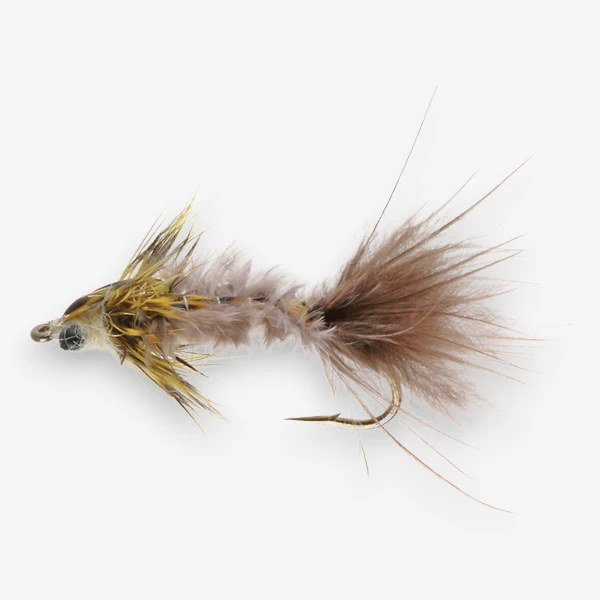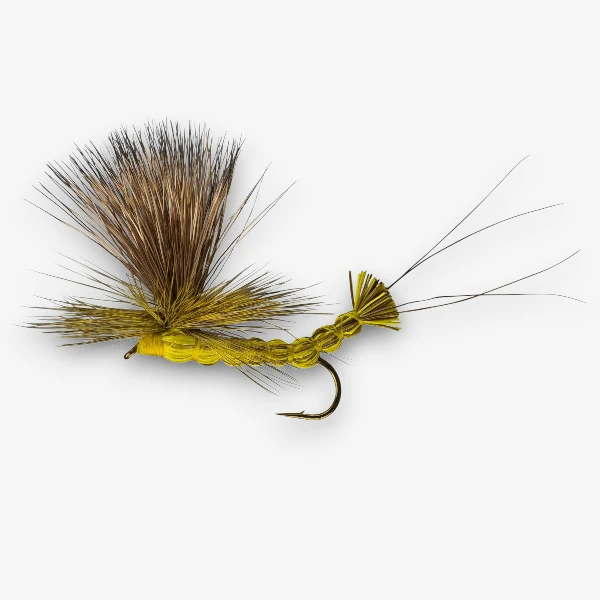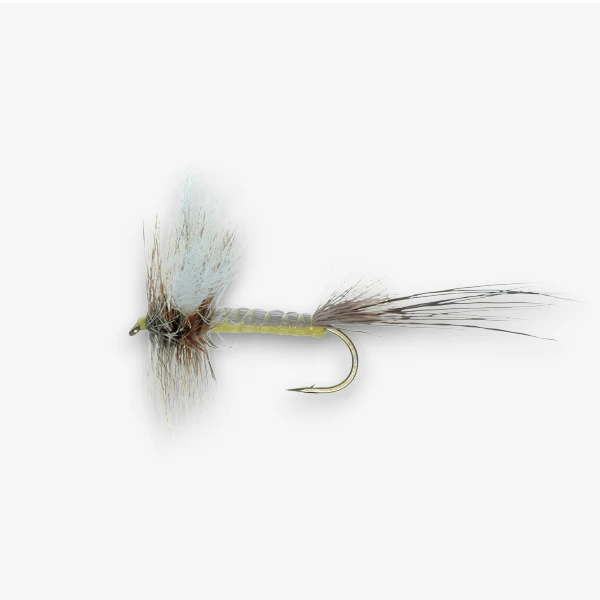Hexagenia (Hex)
Description
Overview: The Hexagenia, affectionately known as the "Hex," is one of the largest mayflies in North America and a true spectacle for fly anglers. Found in warm, slow-moving rivers, lakes, and ponds with silty or sandy bottoms, Hex hatches occur in the evenings of late spring through summer. Their emergence, often just before dusk, triggers ferocious feeding from trout, bass, and other fish, creating an unforgettable fly fishing experience. The Hex’s size and slow emergence make it a prime target for anglers seeking explosive strikes on the surface.
Nymph Stage: Hexagenia nymphs are large, burrowing mayflies measuring 1 to 1 1/4 inches in length. Their bodies are golden-brown to olive with prominent gills along the abdomen and strong legs for digging into soft substrates. These nymphs swim with undulating motions, making them highly visible to fish. Nymph patterns tied on hook sizes 4 to 8 are effective when fished with slow, steady retrieves near the bottom. Focus on silty areas of lakes and river bends where nymphs burrow before emergence.
Emerger Stage (Subsurface): As Hexagenia nymphs rise to the surface to molt into duns, they swim slowly and are highly vulnerable to predation. Emergers are golden to pale yellow with prominent wing cases. Emerger patterns tied on hook sizes 6 to 8 can be fished just below the surface with a lift-and-swing or slow retrieve. Target areas near weed beds, drop-offs, or sandbars during low light conditions.
Adult Stage (Dry): Adult Hex mayflies are 1 to 1 1/2 inches long, with pale yellow to creamy bodies and large, upright, translucent wings. Dry fly patterns tied on hook sizes 4 to 8 are ideal for imitating freshly emerged duns. Fish these flies with a dead drift during the evening hatch, focusing on calm pools and slower currents where Hexes float after emerging. Spinner patterns can also be effective later in the evening, as adults return to lay eggs on the water’s surface.
Hatch Chart
Subscribe to view hatch locations. Hatch data is available for all species.


